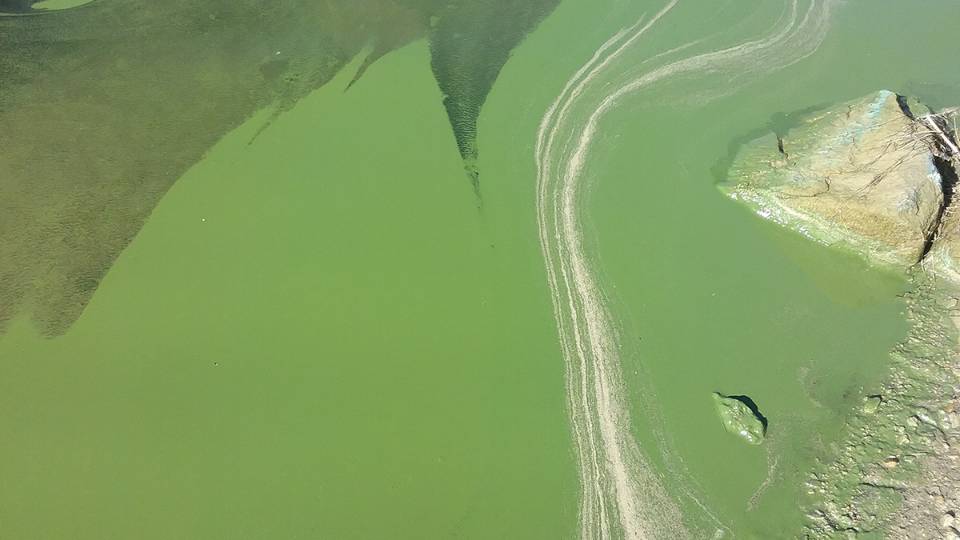Harmful algal blooms (HABs) are large growths of cyanobacteria that may change the water color or form surface scums and occur in lakes, reservoirs, ponds, and less frequently in streams. Cyanobacteria can produce deadly toxins that are harmful to human, livestock, and pet health. These tiny plant-like bacteria produce toxins that can attack the kidneys, liver, reproductive and nervous systems, and irritate the skin. Animals and swimmers, which often ingest surface waters, are at particular risk.
Cyanobacteria blooms tend to take two forms:
- HABs can be suspended throughout the water column. Blooms forming in the water column can look like “pea soup,” green clumps or globules, green mats, or grass clippings.
- HABs can form a thick surface scum. These scums develop when the cyanobacteria begin to die and cannot control their buoyancy. These scums can be especially toxic. These HABs are often described as looking like “spilled paint” or streaks on the water surface and may change color (green, white, blue, red, purple, brown) over time.
Green algae come in many forms and may look like underwater moss, thick stringy mats, or floating slimy scum. Types of green algae can look a lot like cyanobacteria and grow in similar nutrient-enriched waterbodies. Unlike cyanobacteria, green algae may form long filamentous strands that make up silky “clouds” below the surface or viscous mats on the surface.
The stick test:
Find a sturdy stick or pole and pull it through the algae. If the stick pulls out strands that look like green hair or threads, the mat on the pond is likely filamentous green algae (non-toxic). If not, you may have a harmful algal bloom.

Duckweed are tiny aquatic plants with a grainy or couscous-like texture that can cover the entire surface of calm, nutrient-enriched ponds. They may resemble miniature lily pads and are generally beneficial to the environment. If you collect them using a stick, you will notice their tiny leaves and root structures.













